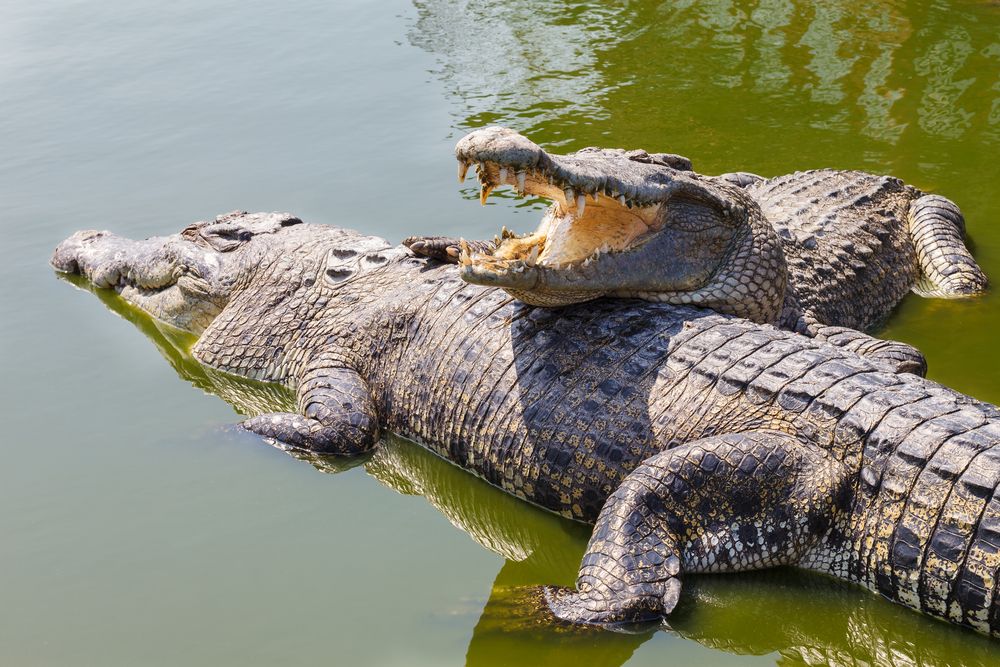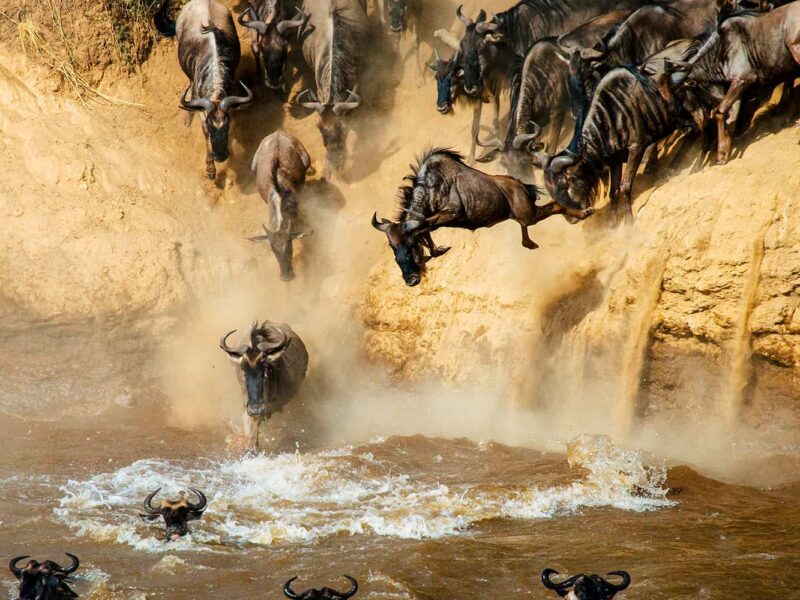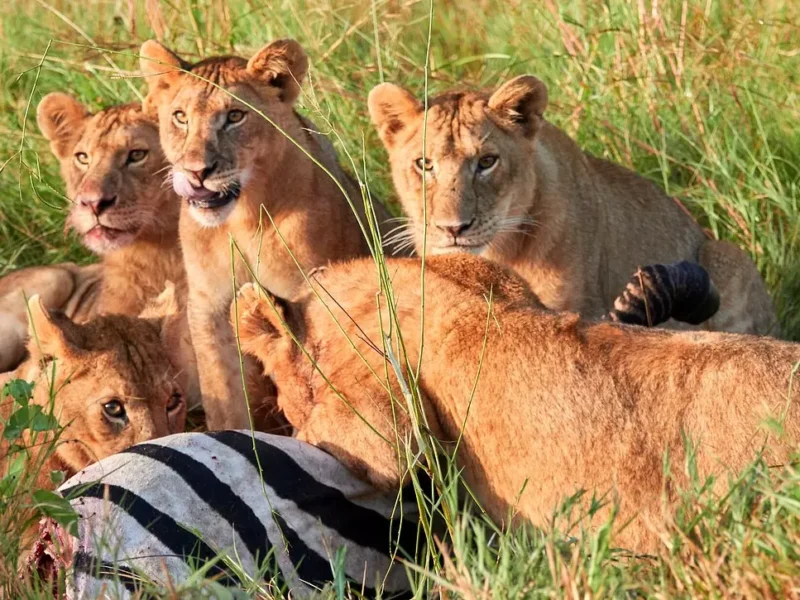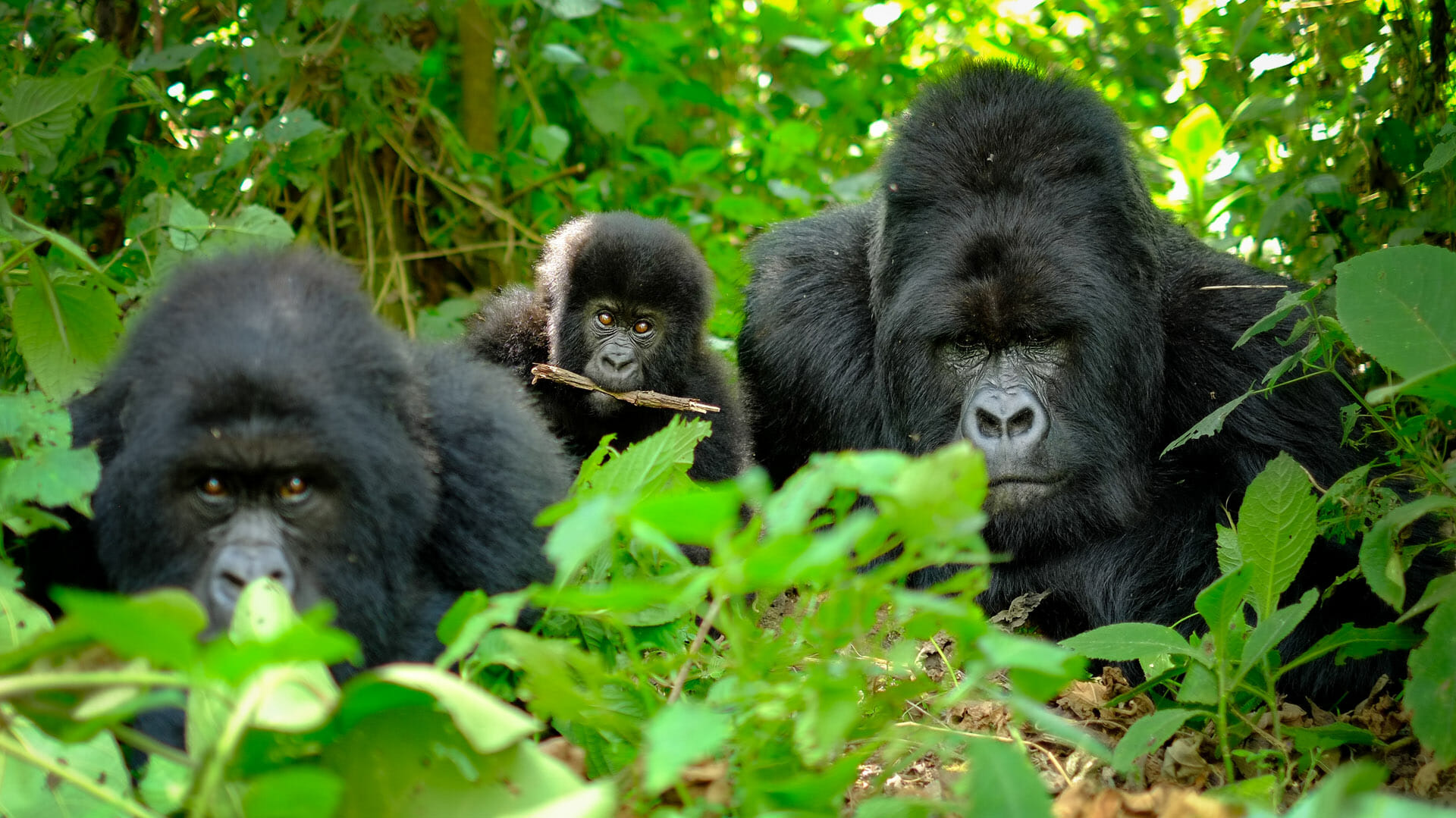
Mountain Gorillas In Rwanda
April 14, 2025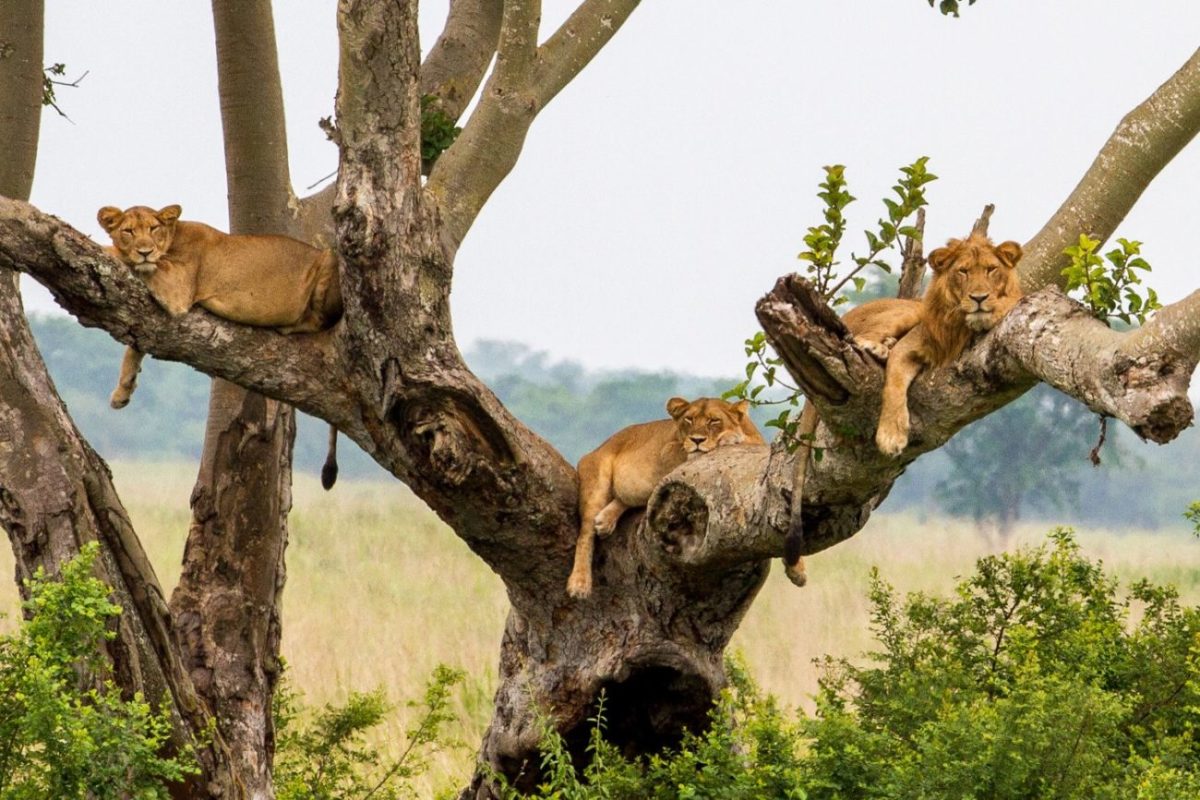
Climbing Lions in Uganda
April 15, 2025Crocodiles in Kenya: Nature’s Ancient Predator
Crocodiles are among the most awe-inspiring and fearsome creatures in Kenya’s wildlife landscape. As part of the country’s rich biodiversity, the Nile crocodile (Crocodylus niloticus) is the most common and widely distributed species in Kenya. With a lineage that dates back over 200 million years, these ancient reptiles are as fascinating as they are formidable.
Species in Kenya
– Nile Crocodile (Crocodylus niloticus)
The only species naturally found in Kenya, Nile crocodiles are the largest freshwater predators in Africa. They can grow up to 6 meters (20 feet) long and weigh over 1,000 kilograms. These reptiles are known for their stealth, strength, and ambush-hunting abilities.
Habitat & Distribution
Crocodiles are semi-aquatic and thrive in freshwater bodies such as rivers, lakes, marshes, and swamps. In Kenya, they are commonly found in:
1. Mara River (Maasai Mara National Reserve)
– Especially famous during the Great Wildebeest Migration, when crocodiles lie in wait to ambush animals crossing the river.
2. Tana River
– Kenya’s longest river, home to a healthy crocodile population. It also flows through Tana River Primate Reserve, offering a chance to spot crocs and monkeys in one trip.
3. Lake Turkana
– Hosts the world’s largest concentration of Nile crocodiles. Central Island on the lake has designated breeding grounds, making it a key conservation site.
4. Athi and Galana Rivers (Tsavo East National Park)
– These rivers cut across the arid Tsavo region and are vital for crocodiles and other wildlife during the dry season.
5. Ewaso Ng’iro River (Samburu & Buffalo Springs)
– Offers good crocodile viewing in Northern Kenya’s arid zones.
6. Coastal Rivers and Estuaries
– While less common in the ocean, crocodiles are often found in brackish water near the coast, especially in mangrove swamps.
Behaviour and Diet
– Feeding: Nile crocodiles are opportunistic carnivores. Their diet includes fish, birds, antelope, zebras, and even buffalo or hippo calves. During the migration, they feast on crossing wildebeest and zebras.
– Hunting Style: Crocodiles are ambush predators. They remain almost motionless in water, waiting for unsuspecting prey to come close. Once within range, they lunge with explosive speed and drag the animal underwater.
– Social Life: Though solitary hunters, crocodiles are often seen basking together on riverbanks or gathering near food sources.
– Reproduction: Females lay 20–80 eggs in sandy nests near water and guard them fiercely. Hatchlings are vulnerable and often fall prey to birds, fish, and even other crocs.
Best Places to See Crocodiles in Kenya
1. Maasai Mara River Crossings (July–October migration)
2. Lake Turkana (Central Island National Park) – Home to breeding colonies
3. Tana River Delta & Primate Reserve
4. Tsavo East National Park – Galana River sightings
5. Mamba Village (Nairobi & Mombasa) – Captive environments for educational visits
Ecological Role
Crocodiles are keystone species, meaning their presence is crucial for the health of aquatic ecosystems. They help control fish populations, clean up dead animals, and create habitats by digging nesting holes and channels in riverbanks.
Human Interaction and Conservation
While crocodiles are protected under Kenyan wildlife laws, human-crocodile conflict occurs, especially in rural communities near water bodies. Attacks can happen when people fetch water, fish, or bathe near crocodile habitats.
To mitigate this:
– Kenya Wildlife Service (KWS) engages in community education and relocation of problem animals.
– Conservationists are studying ways to improve human-wildlife coexistence, especially in regions like the Tana River Basin.
Fascinating Facts
– A Nile crocodile can hold its breath underwater for up to 30 minutes (some reports say longer).
– Their jaws exert a bite force of over 5,000 one of the strongest in the animal kingdom.
– Crocodiles swallow stones (called gastroliths) to help them balance underwater.
– Despite their size, they can launch out of the water to snatch birds or monkeys from overhanging branches.
Crocodiles in Kenya are more than just fearsome creatures — they are an essential part of the ecosystem and a key attraction for wildlife enthusiasts. From the adrenaline-charged drama of a Mara River crossing to the eerie silence of Lake Turkana’s croc-infested shores, these reptiles add a primal edge to the Kenyan wilderness.
Let me know if you’d like this turned into a travel guide, infographic, kids’ version, or a more scientific article!
While often portrayed as fearsome and dangerous, crocodiles in Kenya are also creatures of resilience, intelligence, and ecological balance. Here’s a deeper look into their complex role in Kenya’s wild and cultural landscape.
Ecological Importance
Crocodiles are apex predators and vital regulators of aquatic ecosystems. Their presence helps maintain the health and diversity of rivers and lakes by:
– Controlling populations of fish and weak or diseased animals.
– Scavenging carcasses, reducing the spread of disease in water bodies.
– Creating micro-habitats: Their nesting behaviors, such as digging holes, help aerate riverbanks and create homes for smaller species like frogs, insects, and crabs.
Without crocodiles, the delicate balance of Kenya’s freshwater ecosystems could tip, leading to overpopulation of certain species and a decline in biodiversity.
Conservation Challenges
Despite their wide distribution, crocodiles in Kenya face several threats:
1. Habitat Loss
– Wetland drainage, damming of rivers, and pollution from agriculture and urban areas are shrinking the crocs’ natural habitat.
– Water flow alterations affect nesting and hatching success.
2. Human-Wildlife Conflict
– In rural communities, crocodiles are sometimes seen as pests or threats, especially when attacks on humans or livestock occur.
– Retaliatory killings can impact local populations.
3. Poaching
– Crocodiles are sometimes hunted illegally for their skin, used in the fashion industry for luxury leather products.
4. Climate Change
– Changes in rainfall and prolonged droughts can dry up nesting sites or cause flooding that washes away eggs.
Crocodiles and Local Communities
In many parts of Kenya, crocodiles are feared, respected, or revered in local folklore. In some traditional beliefs:
– Crocodiles are seen as spiritual guardians of rivers.
– In other contexts, they are believed to punish wrongdoers or symbolize strength and resilience.
However, myths can also fuel fear, leading to unnecessary killings. Conservation efforts today often include community education and involvement, especially through eco-tourism and wildlife stewardship programs.
Eco-Tourism & Crocodiles
Crocodile viewing is a key experience in Kenya’s wildlife tourism circuit, especially during dramatic moments like river crossings in the Maasai Mara.
Key crocodile tourism experiences:
– The Great Migration: The Mara River crossings offer one of the most dramatic wildlife spectacles on Earth, as wildebeest and zebras attempt to outrun crocodile ambushes.
– Lake Turkana Expeditions: Adventure travelers often visit Central Island to see the giant crocodiles nesting in volcanic craters.
– Mamba Villages (Nairobi & Mombasa): These centers offer close encounters, feeding demos, and educational tours about crocodile life cycles.
Tourism provides a financial incentive to protect crocodiles and their habitats, turning potential conflict into conservation opportunity.
Research and Education
Kenya has become a hub for herpetological research (the study of reptiles and amphibians). Scientists study crocodiles to learn more about:
– Their movement and migration patterns
– Genetic diversity among regional populations
– Nesting behavior and hatchling survival
– Human-crocodile conflict mitigation
Institutions like the Kenya Wildlife Service (KWS) work alongside international conservation bodies to monitor croc populations and promote coexistence.
What You Can Do to Help
– Support responsible tourism that respects wildlife and local communities.
– Educate others about the importance of crocodiles in ecosystems.
– Report illegal activities such as poaching or trade of crocodile products.
– Respect warning signs near rivers and lakes in wildlife areas to avoid accidents.
Crocodiles in Kenya represent the raw, untamed power of the wild — ancient survivors who continue to play a crucial role in the country’s ecosystems. Whether gliding silently through the Mara River or basking along the shores of Lake Turkana, these creatures command respect. Protecting them means protecting Kenya’s wild heart.

